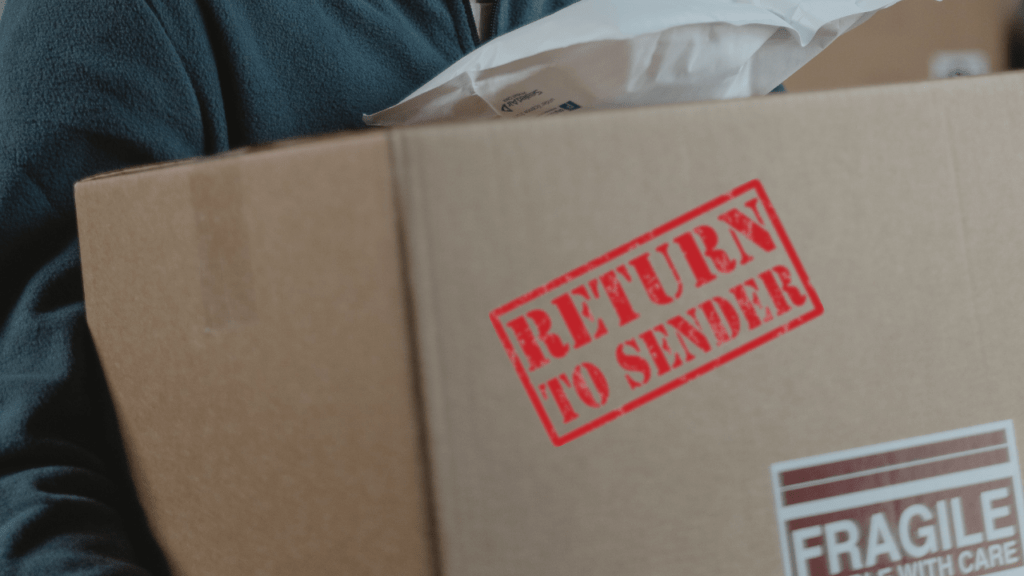
Returning parcels can be a frustrating and costly experience for both senders and recipients. Understanding the reasons behind parcel returns and implementing preventive measures can help minimize the occurrence of return to sender situations. In this article, we delve into the top reasons why parcels are returned, provide practical shipping tips to prevent returns, and highlight measures taken by leading companies like FedEx, UPS, and DHL to mitigate returns.
Reasons for Parcel Returns:
- Incorrect or Incomplete Address: Incorrect or incomplete addresses are among the primary reasons for parcel returns. Missing apartment numbers, wrong zip codes, or typographical errors can lead to delivery failures.
- Unclaimed or Refused Packages: If recipients are unavailable or refuse to accept the package, it often results in a return to sender. Reasons for refusal may include damaged packaging, unexpected costs, or change of mind.
- Failed Delivery Attempts: Failed delivery attempts due to recipient unavailability or incomplete delivery instructions can lead to parcels being returned. Multiple unsuccessful delivery attempts can trigger a return to sender.
- Damaged or Insufficient Packaging: Inadequate packaging that fails to protect the contents during transit may result in returns. Damaged items or packages that appear tampered with are often sent back to the sender.
Prevention Tips:
- Accurate Address Verification: Double-checking recipient addresses during the order process can help prevent incorrect deliveries and subsequent returns. Implement address validation tools or use address verification services to minimize errors.
- Clear Delivery Instructions: Encourage recipients to provide clear delivery instructions to avoid failed delivery attempts. Include details such as preferred delivery times, secure drop-off locations, or alternative authorized recipients.
- Robust Packaging: Ensure items are securely packaged to withstand the rigors of transit. Use appropriate cushioning materials, sturdy boxes, and sealing methods to protect the contents. Consider adding “Fragile” or “Handle with Care” labels when necessary.
- Communication and Tracking: Establish effective communication channels with recipients, providing tracking numbers and delivery updates. Encourage recipients to track their parcels and promptly notify the carrier or recipient of any delivery issues.
Industry Measures to Mitigate Returns:
- Carrier-Sender Collaboration: Leading courier companies like FedEx, UPS, and DHL collaborate with senders to minimize returns. They offer address validation tools, pre-shipment address verification services, and detailed delivery instructions to improve accuracy and prevent return situations.
- Delivery Flexibility: Some couriers provide delivery options that allow recipients to customize delivery preferences. This includes rescheduling deliveries, selecting alternate delivery locations, or authorizing release without a signature.
- Return Management Solutions: Companies like FedEx, UPS, and DHL often implement return management solutions to streamline the return process. This includes easy-to-use return labels, automated return authorizations, and clear return instructions to simplify returns for both senders and recipients.
- Enhanced Communication Channels: Effective communication channels between couriers, senders, and recipients can help identify and resolve delivery issues promptly. Notifications, alerts, and dedicated customer support channels can prevent unnecessary returns.
Industry leaders such as FedEx, UPS, and DHL, prioritize customer experience and have implemented measures to address the key reasons for parcel returns.
FedEx offers address validation tools and services that verify addresses before shipment, reducing the chances of incorrect deliveries. They also provide options for recipients to customize their delivery preferences, including rescheduling deliveries or authorizing release without a signature. Additionally, FedEx has a streamlined return management system with easy-to-use return labels and clear instructions to simplify the return process.
UPS, another industry giant, focuses on address accuracy by offering address validation services. They provide comprehensive delivery instructions that allow recipients to choose alternative delivery locations or reschedule deliveries. UPS also facilitates returns through their online portal, making it convenient for both senders and recipients.
DHL emphasizes communication and tracking to prevent return to sender situations. They provide detailed tracking information and delivery updates to keep recipients informed. DHL’s flexible delivery options, such as redirecting packages to pickup locations, allow recipients to have greater control over the delivery process, reducing the likelihood of returns.
To prevent returns, it’s essential for senders to collaborate with the courier companies and utilize the services they offer. By leveraging the tools provided by FedEx, UPS, and DHL, senders can verify addresses, communicate effectively with recipients, and streamline the return process if necessary. This collaborative approach ensures that parcels are delivered successfully, enhancing customer satisfaction and reducing return to sender incidents.
In conclusion, by understanding the reasons for parcel returns and implementing preventive measures, senders can minimize return to sender situations. Companies like FedEx, UPS, and DHL have introduced various initiatives, including address verification, delivery flexibility, and efficient return management, to mitigate returns and ensure successful deliveries. By following these industry practices and leveraging the services provided by these companies, senders can optimize their shipping process, reduce costs, and enhance customer satisfaction.
